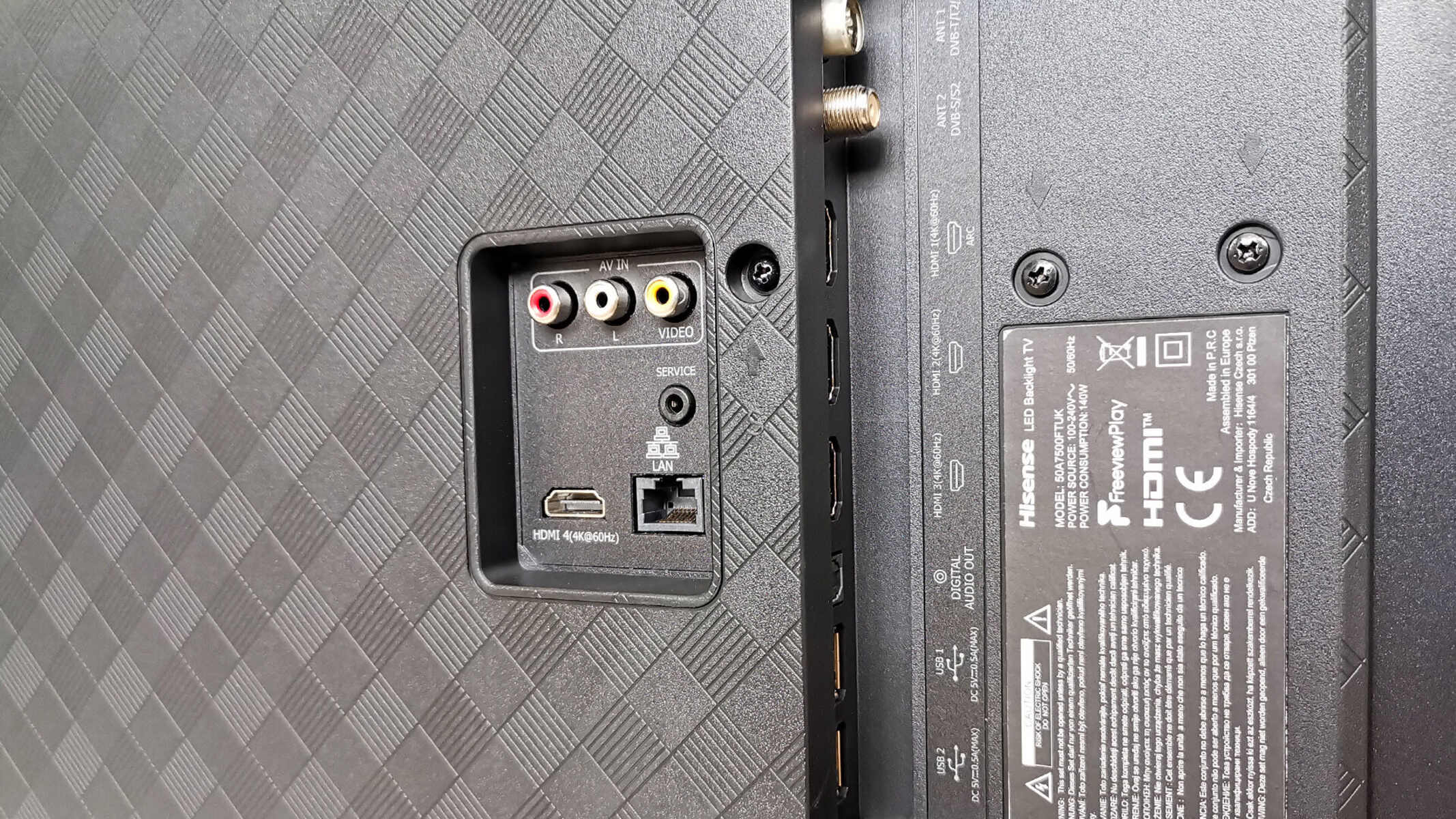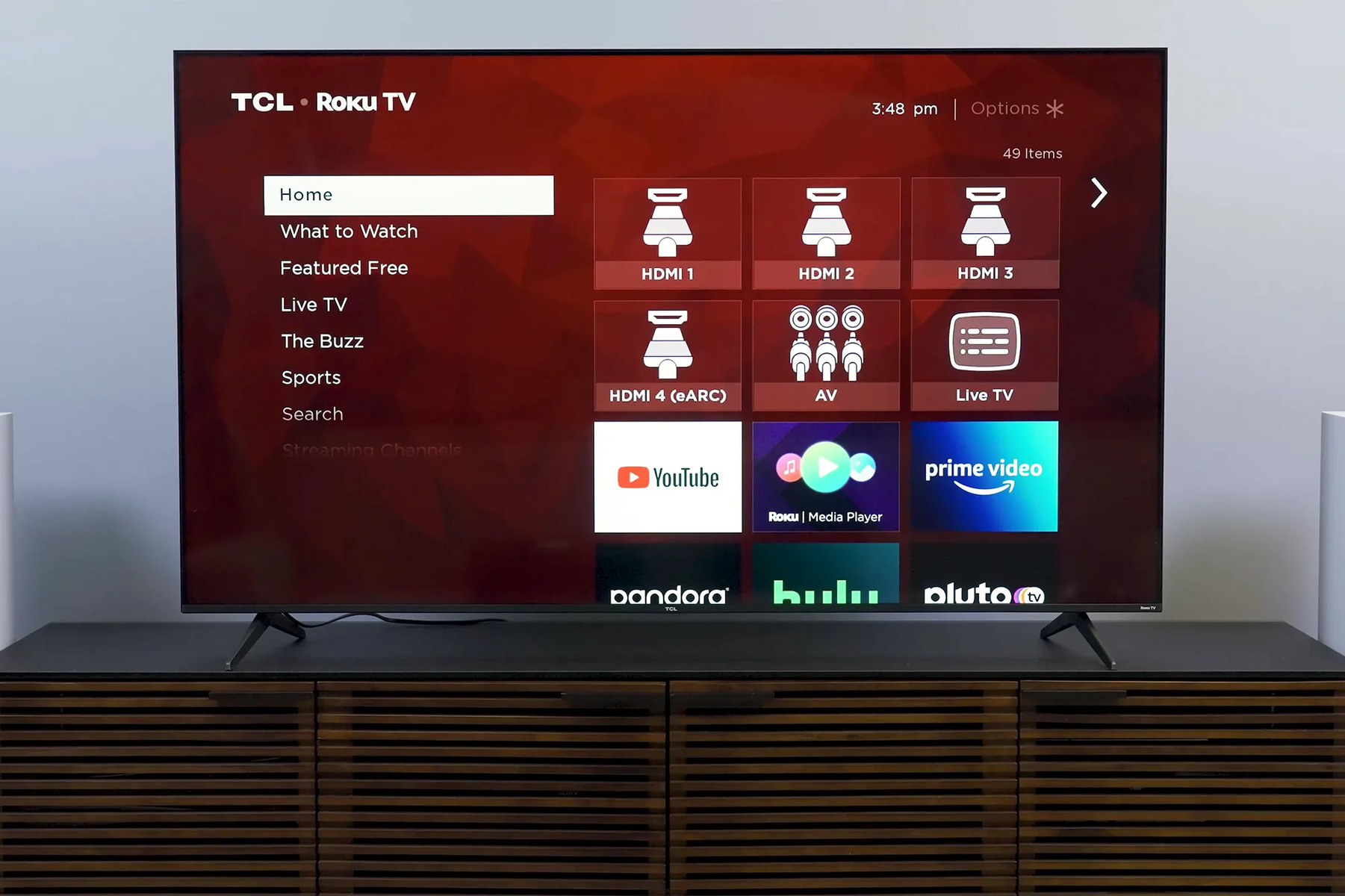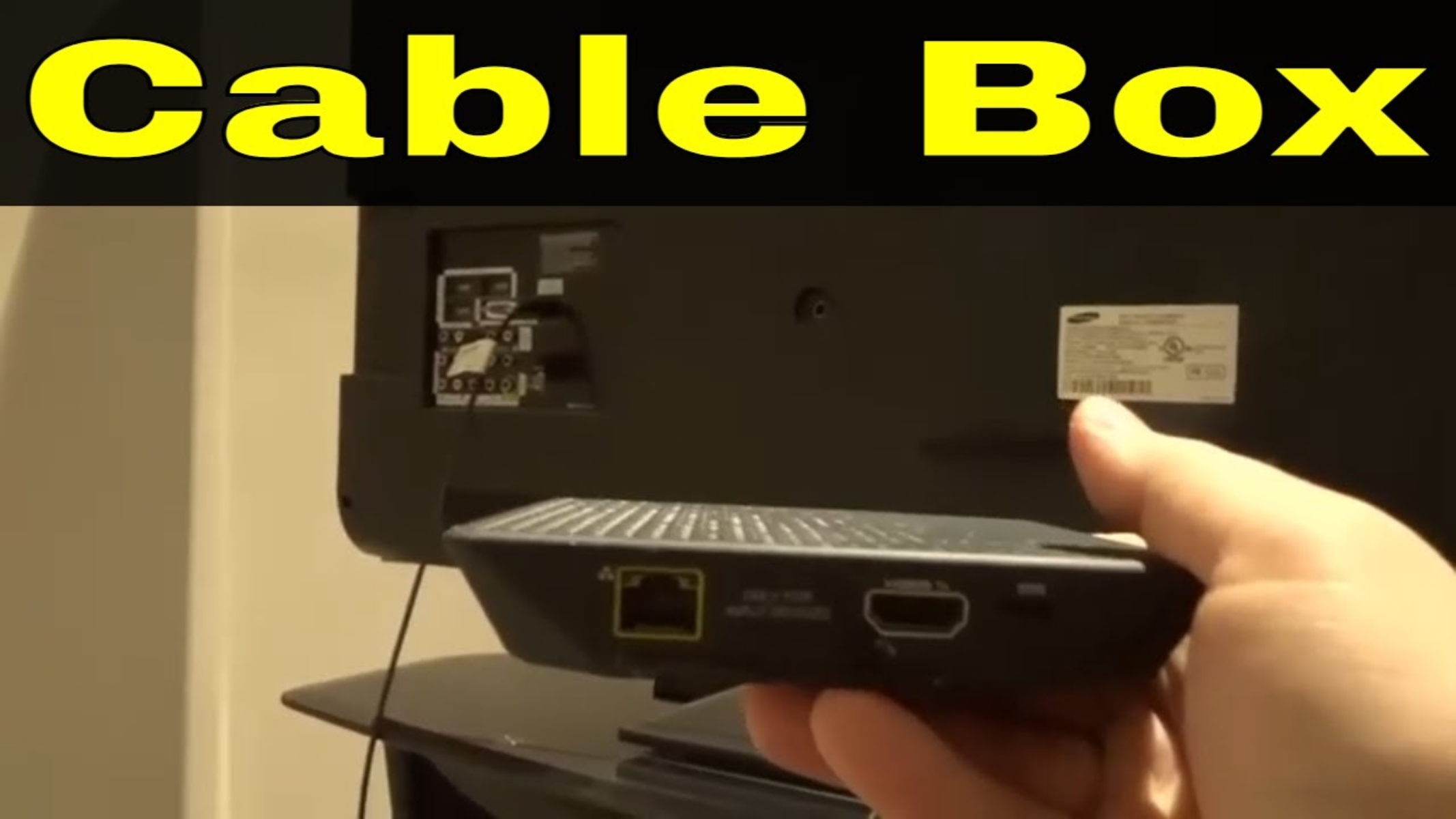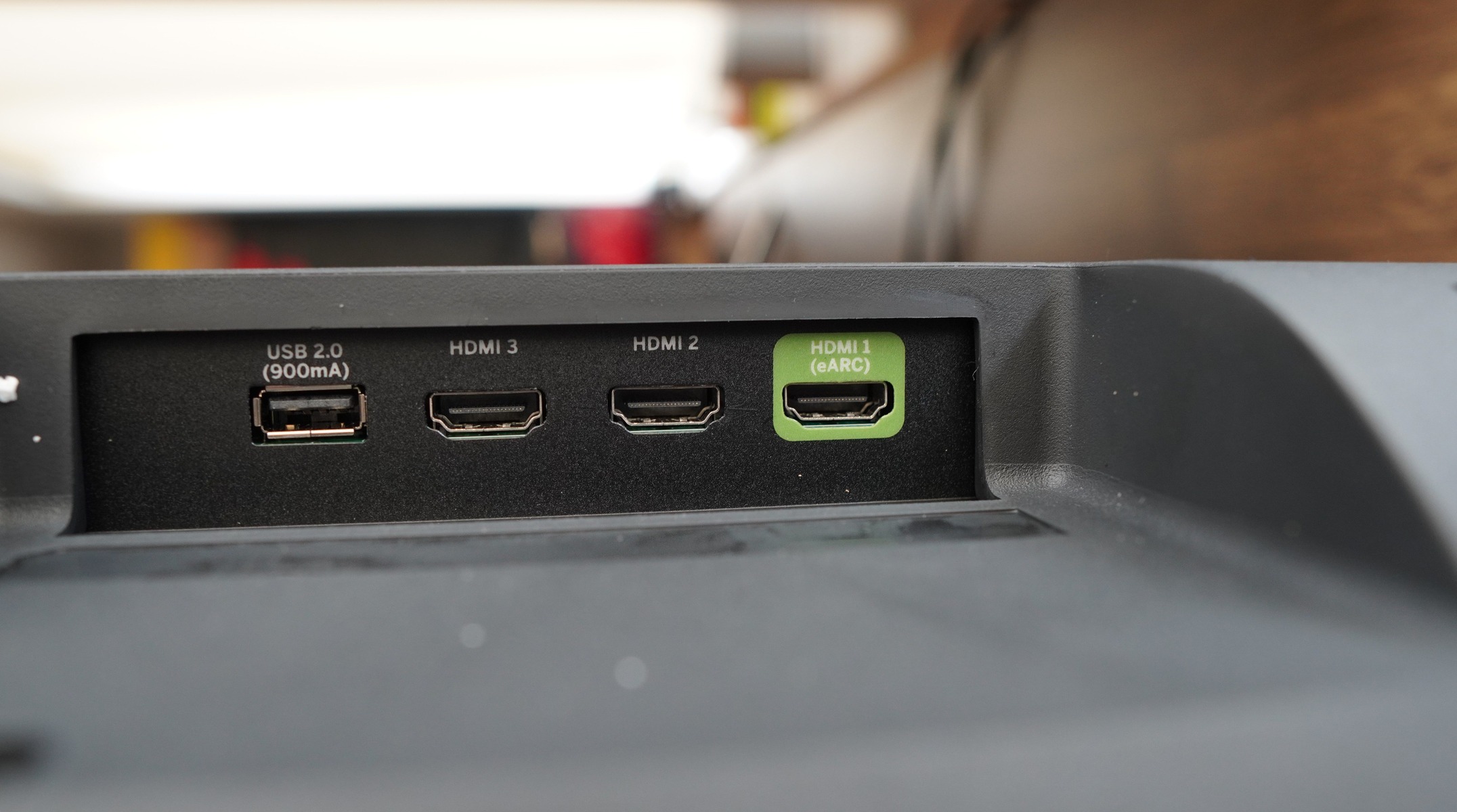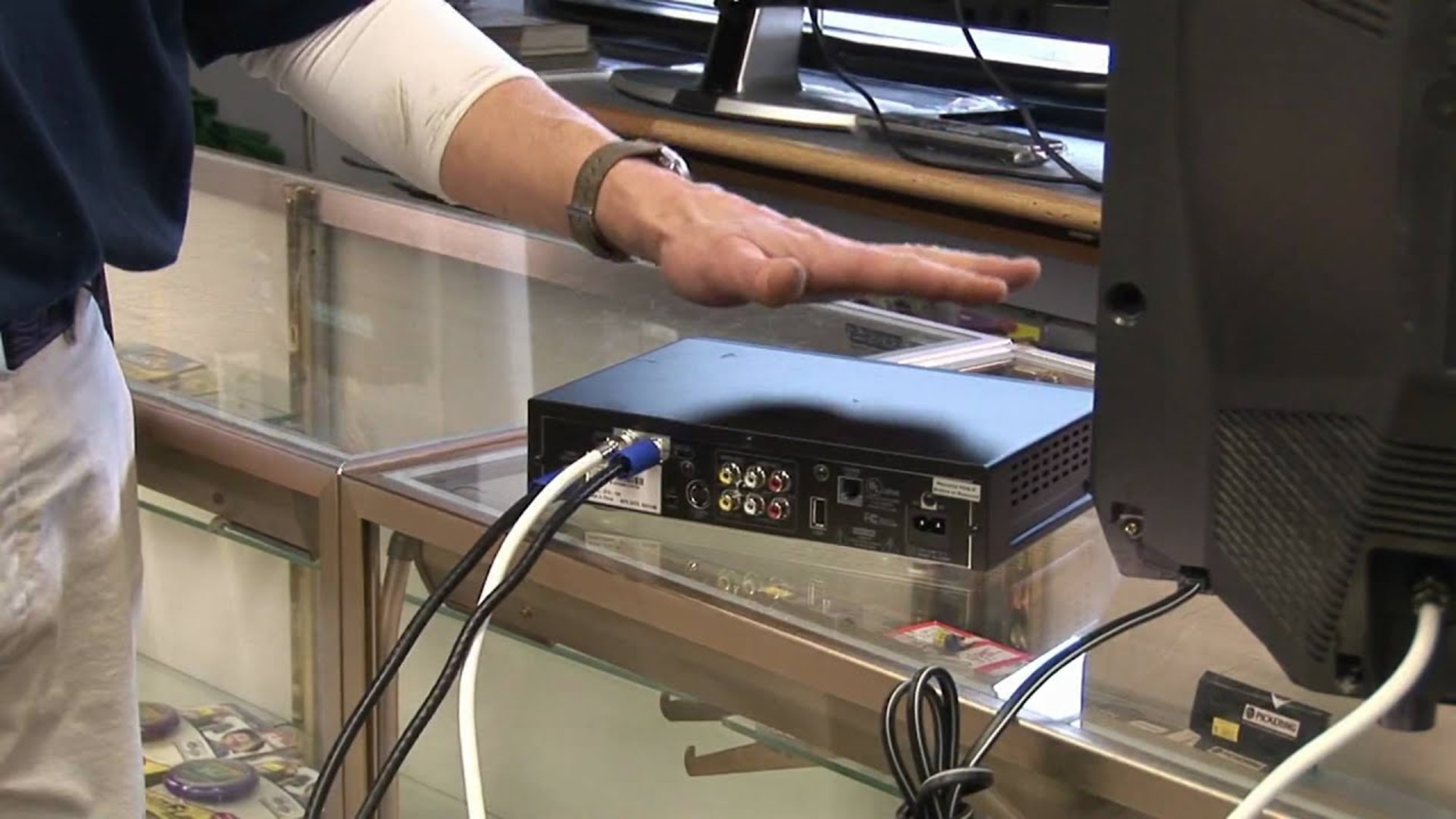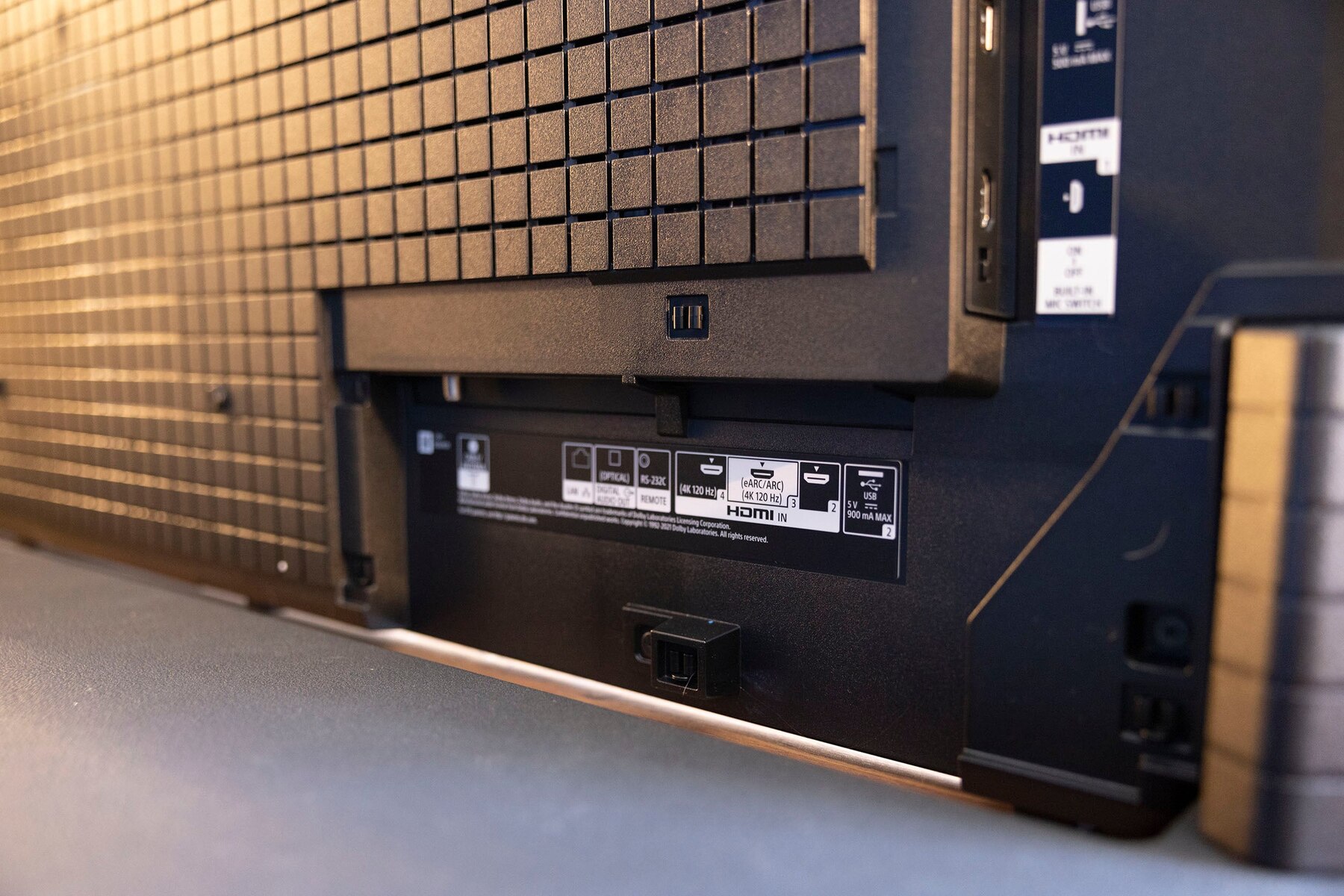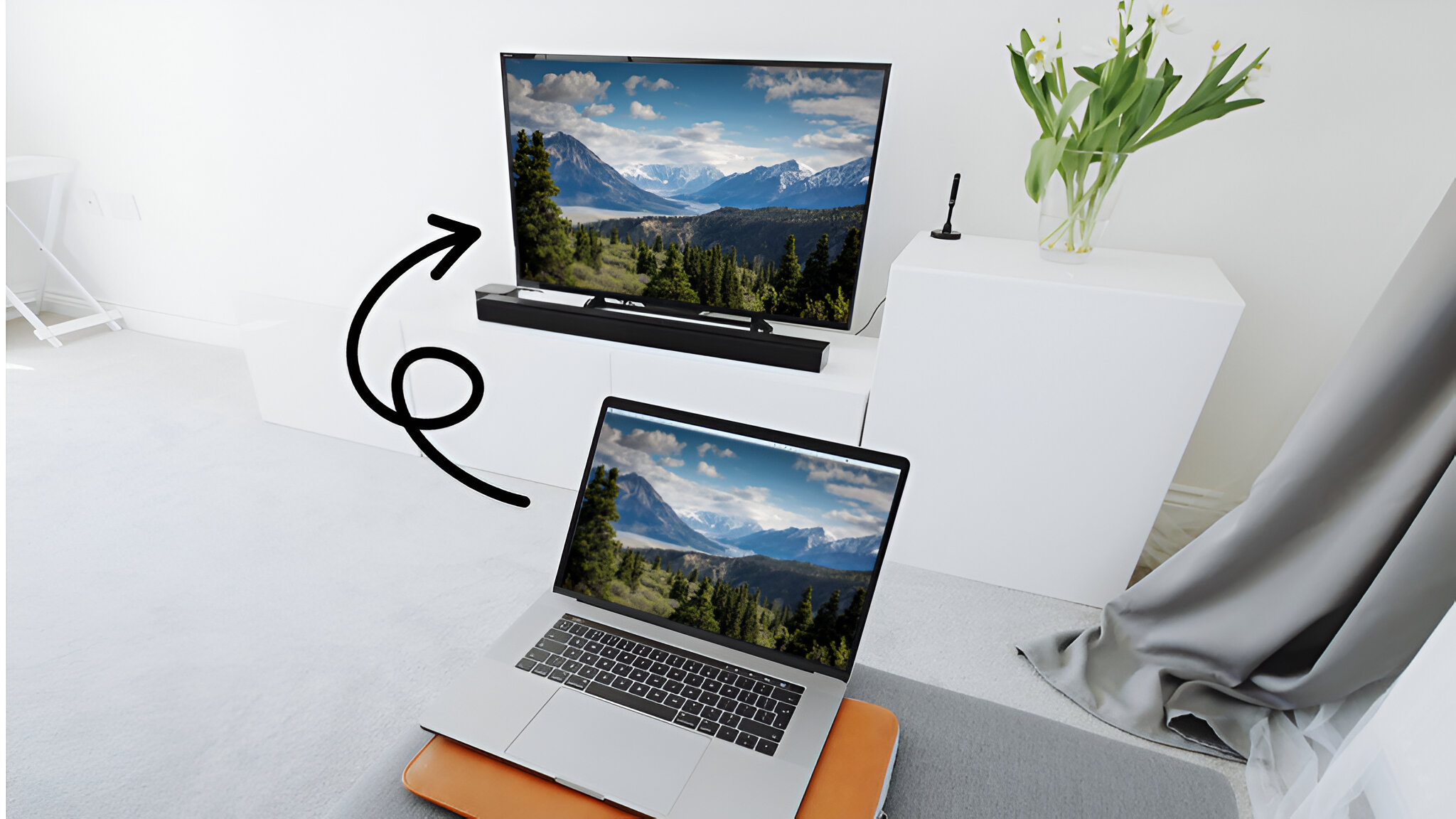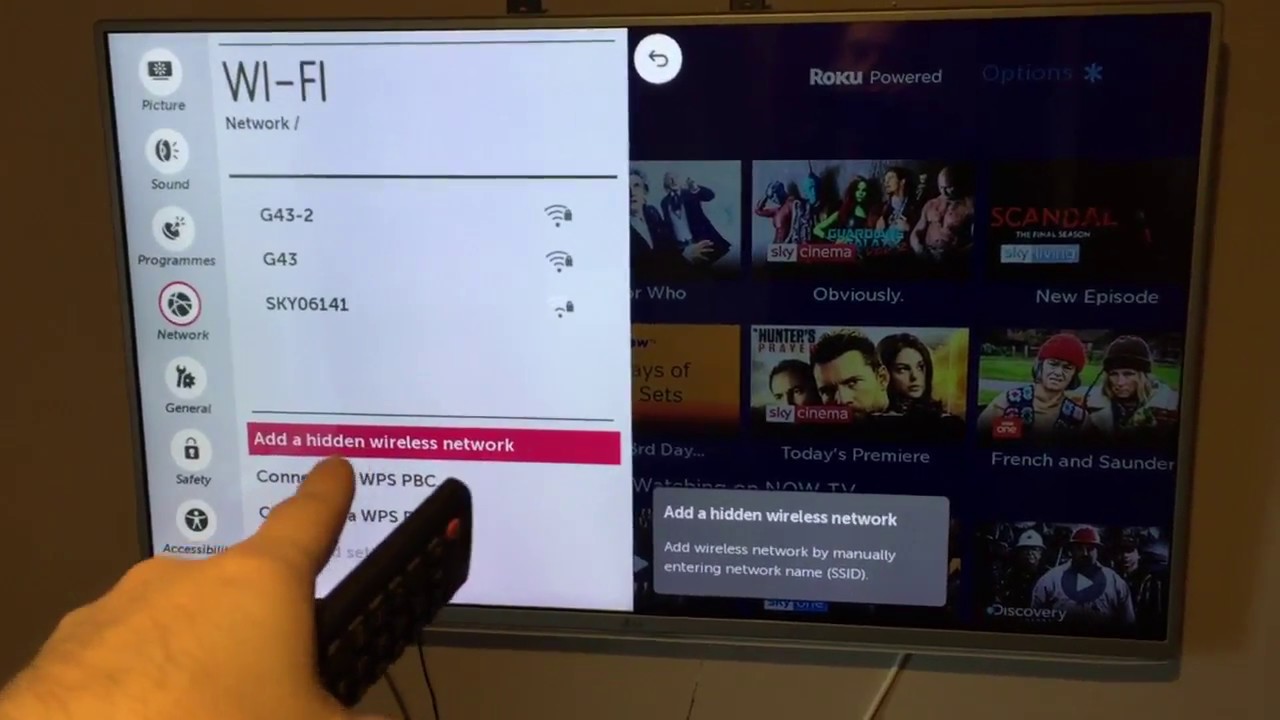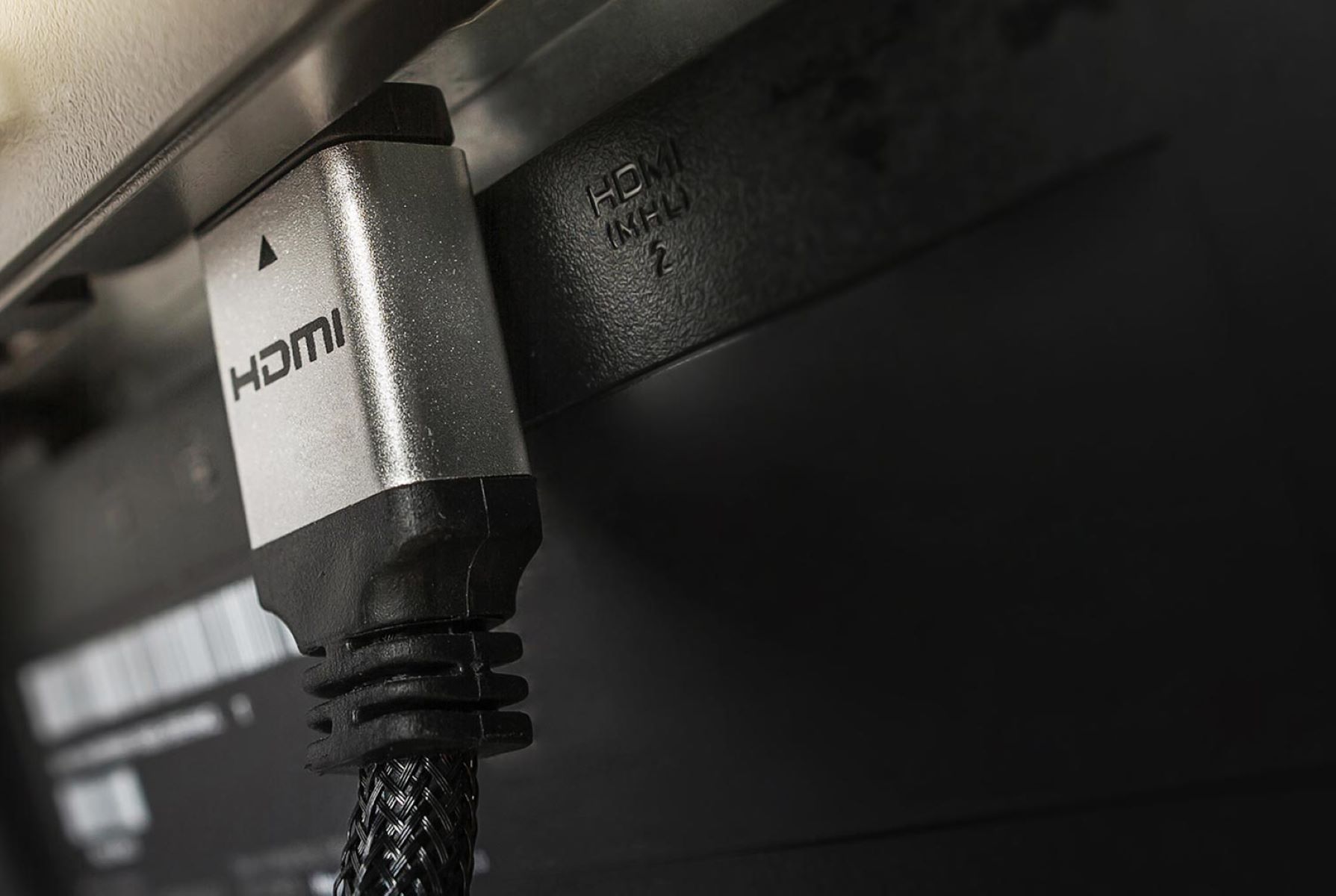What Is HDMI On TV
HDMI, which stands for High-Definition Multimedia Interface, is a digital connection that allows audio and video signals to be transmitted between devices, such as TVs, computers, game consoles, and DVD players. It has become the standard method for connecting devices to TVs due to its ability to deliver high-quality audio and video signals.
HDMI cables are typically connected to the HDMI ports found on the back or side of modern TVs. These ports allow for the easy connection of external devices, such as Blu-ray players or streaming devices, to enjoy high-definition content on the TV screen.
One of the main advantages of HDMI is its ability to carry both audio and video signals in a single cable. This eliminates the need for multiple cables and simplifies the setup process. Additionally, HDMI supports high-definition resolutions, including 1080p and even 4K, offering a crisp and vibrant viewing experience.
HDMI also provides a digital connection, which means that the audio and video signals are transmitted in a digital format without any loss of quality. This ensures a clear and reliable signal transmission, resulting in sharper images and enhanced sound quality.
An HDMI connection is also capable of supporting advanced features like HDMI CEC (Consumer Electronics Control), which allows you to control multiple devices connected via HDMI using a single remote control.
Overall, HDMI has revolutionized the way we connect our devices to TVs, providing a convenient and high-quality solution for enjoying multimedia content on larger screens. Whether you’re watching movies, playing video games, or streaming your favorite TV shows, HDMI ensures a seamless and immersive viewing experience.
Introduction
With the advancements in technology, televisions have transformed from bulky, standard-definition boxes to sleek, high-definition displays. As TVs have evolved, so have the methods of connecting various devices to them.
One such method is HDMI, which stands for High-Definition Multimedia Interface. HDMI has become the standard connection for TVs due to its ability to deliver high-quality audio and video signals.
In this article, we will explore what HDMI is and how it works with TVs. We will also discuss the advantages of using HDMI and how it compares to other connection methods. Whether you’re a tech enthusiast or someone looking to upgrade your home entertainment setup, understanding HDMI will give you a clearer picture of how to make the most out of your TV viewing experience.
We will delve into the different types of HDMI cables and the advantages they offer. We will also discuss the various versions of HDMI and their compatibility with different devices. Additionally, you will learn how to connect and use HDMI on your TV, as well as troubleshoot common issues that may arise.
By the end of this article, you will have a solid understanding of HDMI and how it revolutionizes the way we connect and enjoy multimedia content on our TVs. So, let’s dive in and explore the intricacies of HDMI’s connection technology.
Overview of HDMI
HDMI, or High-Definition Multimedia Interface, is a digital connection standard used to transmit high-quality audio and video signals between devices. It serves as a single cable solution for connecting devices such as televisions, computers, gaming consoles, Blu-ray players, and more.
HDMI cables are capable of transmitting both audio and video signals, eliminating the need for separate cables for each. This simplifies the setup process and reduces cable clutter. The audio and video signals are transmitted in a digital format, ensuring a reliable and lossless transfer of information.
One of the key features of HDMI is its ability to support high-definition resolutions. It can transmit video signals at resolutions up to 4K, providing an incredibly sharp and detailed image quality. Additionally, HDMI supports various color formats, including deep color and wide color gamut, enhancing the visual experience even further.
HDMI also supports multi-channel audio, including formats such as Dolby TrueHD and DTS-HD Master Audio. This ensures immersive and high-fidelity sound reproduction, enhancing the overall viewing or gaming experience.
Moreover, HDMI cables are bi-directional, meaning they can transmit audio and video signals in both directions. This enables features like Audio Return Channel (ARC), which allows the TV to send audio signals back to an external audio system, eliminating the need for a separate audio cable. This is particularly useful when connecting soundbars or AV receivers to the TV.
Another advantage of HDMI is its compatibility with various other technologies. It can seamlessly integrate with features like HDMI-CEC (Consumer Electronics Control), which allows for remote control of multiple HDMI-connected devices using a single remote control.
In summary, HDMI provides a high-quality digital connection solution for transmitting audio and video signals between devices. Its support for high-definition resolutions, multi-channel audio, and compatibility with other technologies make it the go-to choice for connecting devices to modern TVs.
History of HDMI
The development of HDMI can be traced back to the early 2000s when consumers started demanding a better way to connect their high-definition devices to televisions. Prior to HDMI, analog connections like component and composite cables were commonly used, but they had limitations in terms of picture and sound quality.
The HDMI standard was first introduced in December 2002 by seven leading technology companies, including Sony, Philips, Panasonic, Toshiba, Hitachi, Thomson, and Silicon Image. Their goal was to create a universal digital connection standard that would combine high-definition video and high-quality audio into a single cable.
The first HDMI specification, version 1.0, was released in April 2002. It supported video resolutions up to 1080p and eight-channel audio. Over the years, several new versions of HDMI were introduced to keep up with the advancements in technology and consumer demands.
With each new version, HDMI introduced new features and improvements. For example, HDMI 1.3, released in June 2006, added support for Deep Color and higher color depths, providing a more vibrant color palette. HDMI 1.4, introduced in May 2009, brought features like Ethernet connectivity and Audio Return Channel (ARC).
As technology progressed, HDMI also kept up with the demand for higher resolutions. HDMI 2.0, released in September 2013, introduced support for 4K video at 60 frames per second and 3D playback. It also increased the maximum bandwidth to 18.0 Gbps, allowing for more data to be transmitted per second.
The latest version of HDMI, HDMI 2.1, was announced in January 2017. It brings significant enhancements, including support for 8K video resolution, Variable Refresh Rate (VRR) for smoother gaming, and eARC (Enhanced Audio Return Channel) for improved audio quality.
Today, HDMI is the de facto standard for connecting devices to televisions, with billions of HDMI-enabled devices sold worldwide. The continuous evolution of HDMI ensures that consumers can enjoy the latest audio and video technologies on their TVs with a single, reliable connection.
How HDMI Works
HDMI works by transmitting digital audio and video signals from a source device to a display device through a single cable. The HDMI cable connects the HDMI output (source) to the HDMI input (display), enabling the transfer of high-quality multimedia content.
At its core, HDMI uses a series of TMDS (Transition Minimized Differential Signaling) lanes to transmit digital data. Each lane consists of a differential pair of wires, with one wire carrying the signal and the other carrying the inverted version of the signal. This differential signaling ensures a robust and noise-free transmission.
When a source device, such as a Blu-ray player, sends an audio or video signal through HDMI, the signal is encoded as a digital stream. This stream is then converted into TMDS packets, which are transmitted through the HDMI cable.
On the receiving end, the display device decodes the TMDS packets and converts them back into the original audio and video signals. The signals are then processed and displayed on the screen or played through the speakers.
One of the key advantages of HDMI is its ability to support high-definition resolutions. This is achieved through the use of high bandwidth and advanced data compression techniques. By transmitting the digital data in a compressed format, HDMI can deliver the high-quality multimedia content without sacrificing image and sound quality.
In addition to audio and video signals, HDMI cables can also transmit other types of data. For instance, HDMI Ethernet Channel (HEC) allows for internet connectivity between HDMI devices, eliminating the need for separate network cables. HDMI also supports other audio formats, such as multi-channel surround sound and object-based audio, providing an immersive audio experience.
Furthermore, HDMI cables can carry various control signals, enabling features like HDMI-CEC (Consumer Electronics Control). HDMI-CEC allows for device control using a single remote control. For example, when you turn on your TV, the HDMI-CEC-enabled devices connected to it, such as a Blu-ray player or soundbar, can also be turned on simultaneously.
In summary, HDMI works by transmitting digital audio and video signals through TMDS lanes in a single cable. Its high bandwidth, data compression techniques, and support for additional data types make it the go-to choice for connecting devices and enjoying high-quality multimedia content.
Types of HDMI Cables
When it comes to HDMI cables, there are several types available on the market. These different types cater to varying needs and specifications. Here are the most common types of HDMI cables:
- Standard HDMI: This is the most common type of HDMI cable. It supports video resolutions up to 1080i and is suitable for most home entertainment setups. Standard HDMI cables are capable of transmitting both high-definition video and multi-channel audio.
- High-Speed HDMI: High-Speed HDMI cables offer improved performance and are ideal for transmitting high-definition video resolutions, including 1080p and even 4K. These cables have higher bandwidth capabilities, allowing for faster data transfer and lower latency. They also support features like 3D playback and are compatible with HDMI-CEC and Ethernet Channel.
- Premium High-Speed HDMI: Premium High-Speed HDMI cables are designed for premium home theater setups. They meet the stringent requirements set by the HDMI Licensing Administrator, ensuring higher performance and reliability. These cables can handle video resolutions up to 4K at 60 Hz and support advanced features like HDR (High Dynamic Range) and eARC (Enhanced Audio Return Channel).
- Ultra High-Speed HDMI: Ultra High-Speed HDMI cables are the latest addition to the HDMI lineup. They are optimized for the most demanding video and audio applications. These cables support resolutions up to 8K at 60 Hz and 4K at 120 Hz, making them ideal for cutting-edge home theater systems and gaming setups. Ultra High-Speed HDMI cables also support features like Dynamic HDR, Variable Refresh Rate (VRR), and Quick Frame Transport (QFT).
- Micro HDMI and Mini HDMI: Micro HDMI and Mini HDMI cables are designed for smaller devices like smartphones, tablets, and cameras. These cables have smaller connectors that can fit into the micro HDMI or mini HDMI ports found on these devices. They allow for easy connection and playback of content on larger screens, such as TVs or monitors.
When choosing an HDMI cable, it’s important to consider your specific requirements and the capabilities of your devices. Always opt for a cable that meets the necessary specifications for your intended use. While higher-end cables may offer enhanced features, such as support for 8K or advanced audio formats, it’s important to ensure compatibility with your devices to maximize performance.
Advantages of HDMI
HDMI offers several advantages over other connection methods, making it the preferred choice for connecting devices to TVs. Here are some of the key advantages of using HDMI:
- High-Quality Audio and Video: HDMI delivers pristine audio and video signals in a digital format, ensuring a clear and lossless transmission. It supports high-definition resolutions, including 1080p and 4K, providing a stunning visual experience with vibrant colors and sharp details.
- Single Cable Solution: HDMI eliminates the need for multiple cables to connect audio and video devices to TVs. With a single HDMI cable, you can seamlessly transmit both audio and video signals, simplifying the setup and reducing cable clutter.
- Compatibility: HDMI is widely adopted and compatible with various audio and video devices, including TVs, computers, Blu-ray players, gaming consoles, and soundbars. It ensures seamless connectivity and communication between devices, allowing for easy integration into existing home entertainment systems.
- Lossless Digital Transmission: Unlike analog connections, HDMI transmits audio and video signals in a digital format, preserving the original quality without any degradation. This results in a crystal-clear image and pristine audio output, free from interference or signal loss.
- Additional Features: HDMI supports advanced features like HDMI-CEC, allowing you to control multiple devices using a single remote control. It also facilitates features like ARC (Audio Return Channel), which eliminates the need for separate audio cables when connecting audio devices to the TV.
- Future-Proof Technology: HDMI evolves with advancements in technology, introducing new versions and features to support the latest audio and video formats. This ensures that HDMI-enabled devices can keep up with the latest standards, providing a future-proof solution for home entertainment.
Overall, HDMI provides a superior connection method for audio and video devices, offering high-quality transmission, simplicity, and compatibility. Whether you’re a movie enthusiast, a gamer, or someone who enjoys multimedia content, HDMI ensures a seamless and immersive experience on your TV screen.
HDMI vs Other Connection Methods
When it comes to connecting devices to TVs, there are several different connection methods available. Let’s compare HDMI with some of the commonly used alternatives:
- Component and Composite Cables: Component and composite cables are analog connection methods that were popular before HDMI became widespread. While they can transmit video and audio signals, they have limitations in terms of picture and sound quality. HDMI, being digital, offers a significant improvement in clarity, color accuracy, and overall audio-visual performance.
- VGA and DVI: VGA and DVI are older video connection standards commonly used for computer displays. While they can transmit video signals, they do not carry audio. HDMI, on the other hand, supports both audio and video in a single cable, making it more convenient for connecting devices like Blu-ray players, gaming consoles, and soundbars.
- DisplayPort: DisplayPort is another digital connection standard that supports high-definition video and audio. Like HDMI, it can handle high resolutions and offers a single cable solution. However, HDMI is more widely adopted, especially in consumer electronics and home entertainment devices. DisplayPort is predominantly found in computer monitors and professional displays.
- Wireless Connection Methods: Wireless connection methods like Wi-Fi, WiDi (Wireless Display), and Miracast provide a cable-free solution for streaming audio and video content to TVs. While they offer convenience, they may suffer from latency and compressed video quality. HDMI, with its direct and wired connection, ensures a reliable and high-quality transmission without the limitations of wireless technologies.
In comparison, HDMI stands out as the preferred choice for connecting devices to TVs due to its digital transmission, support for high-definition resolutions, and ability to carry both audio and video signals in a single cable. It provides a simple and reliable solution for enjoying multimedia content on larger screens, offering improved picture and sound quality over analog and wireless connection methods.
HDMI Versions
Since its inception, the HDMI standard has gone through several iterations. Each version introduces new features and advancements to keep up with evolving technology and consumer demands. Let’s take a closer look at the different HDMI versions:
- HDMI 1.0: The first official HDMI version, released in April 2002, supported video resolutions up to 1080i and featured eight-channel audio capabilities.
- HDMI 1.3: Introduced in June 2006, HDMI 1.3 added support for higher color depths, Deep Color, and increased bandwidth for faster data transfer. It also introduced features like Dolby TrueHD and DTS-HD Master Audio support.
- HDMI 1.4: Released in May 2009, HDMI 1.4 brought new capabilities such as 3D playback, support for 4K video, and an Audio Return Channel (ARC) that allowed audio signals to be sent from the TV back to an external audio system.
- HDMI 2.0: Released in September 2013, HDMI 2.0 expanded the bandwidth to 18.0 Gbps, enabling support for 4K video at 60 frames per second and 3D playback at higher resolutions. It also introduced support for the wide color gamut and increased audio sampling rates.
- HDMI 2.1: Announced in January 2017, HDMI 2.1 is the latest version and offers significant enhancements. It supports higher video resolutions, including 8K at 60 Hz and 4K at 120 Hz, along with dynamic HDR for improved picture quality. HDMI 2.1 also introduces features like Variable Refresh Rate (VRR) for smoother gaming, eARC (Enhanced Audio Return Channel) for improved audio transmission, and Quick Frame Transport (QFT) for reduced latency.
It’s important to note that while HDMI versions have introduced new features and capabilities, backward compatibility is maintained. This means that devices using earlier HDMI versions can still be connected and used with devices supporting newer HDMI versions, albeit without accessing the latest features of the newer versions.
When purchasing HDMI cables and devices, it’s important to consider the specific HDMI version you require to ensure compatibility with your current setup and the capabilities you desire. This will allow you to make the most out of your multimedia experience and enjoy the enhanced features offered by the latest HDMI version.
How to Use HDMI on TV
Connecting devices to your TV using HDMI is a straightforward process. Here are the steps to follow:
- Identify the HDMI ports on your TV: Look for the HDMI input ports on the back or side of your TV. These ports are usually labeled as HDMI 1, HDMI 2, etc.
- Gather the necessary cables: Depending on the devices you want to connect, ensure you have the appropriate HDMI cables. For example, if you’re connecting a Blu-ray player or gaming console to your TV, you’ll need a standard or high-speed HDMI cable. If you’re connecting a smaller device like a camera or smartphone, you may need a micro HDMI or mini HDMI cable.
- Connect the HDMI cable: Plug one end of the HDMI cable into the HDMI output port on the source device (e.g., Blu-ray player) and the other end into the HDMI input port on your TV. Make sure the connections are secure and fit snugly.
- Select the HDMI input on your TV: Use your TV’s remote control to navigate to the input selection menu. Select the HDMI input where you connected the device. For example, if you connected your device to HDMI 1, select HDMI 1 as the input source.
- Power on the connected device: Turn on the device you connected to your TV using HDMI, such as the Blu-ray player or gaming console. Your TV should recognize the HDMI signal and display the content from the device on the screen.
- Adjust settings if necessary: Depending on the device and the TV, you may need to adjust some settings to optimize the audio, video, or other features. Consult the user manuals for both the TV and the device for detailed instructions on adjusting the settings.
That’s it! You have successfully connected and set up HDMI on your TV. Repeat the process for any additional devices you want to connect using HDMI.
Remember to use high-quality HDMI cables for better performance and make sure the cable length is appropriate for your setup to avoid any signal degradation. Enjoy your high-definition audio and video content on the big screen with HDMI!
Troubleshooting HDMI Issues
While HDMI is generally a reliable and convenient connection method, there may be times when you encounter issues. Here are some common HDMI issues you may come across and troubleshooting steps to resolve them:
- No signal: If you’re not getting a signal on your TV when using HDMI, first, ensure that both the source device and the TV are powered on. Check that the HDMI cable is securely connected at both ends. Try unplugging and replugging the cable to ensure a proper connection. Additionally, try selecting a different HDMI input on your TV or test the device with another HDMI cable or TV to identify if the issue lies with the device or cable.
- Poor picture or sound quality: If the picture or sound quality is subpar, it could be due to a faulty HDMI cable. Try using a different HDMI cable to see if the issue resolves. Also, ensure that the devices involved are set to output their signals at the desired resolution and audio format. Adjust the settings on the source device and the TV to match the capabilities of both.
- Audio but no video or vice versa: If you’re experiencing audio but no video or vice versa, first check the HDMI cable for any physical damage or loose connections. Ensure that the source device and the TV are both set to the correct HDMI input. Try power cycling both devices by turning them off and unplugging them from the power source for a few minutes before reconnecting and powering them back on.
- Handshake issues: Sometimes, devices may have trouble establishing a connection, commonly caused by a handshake issue. This can be resolved by turning off both the source device and the TV, unplugging them from the power source, and then reconnecting and powering them back on. It may also help to connect the HDMI cable directly to the TV without any intermediary devices.
- HDCP errors: HDCP (High-bandwidth Digital Content Protection) is a form of digital copy protection used by HDMI devices. If you encounter HDCP errors, ensure that you’re using HDMI cables that support HDCP. If using an HDMI splitter or receiver, verify that it is HDCP compliant. In some cases, turning off the source device and TV, unplugging them, and then reconnecting can resolve HDCP-related issues.
If the above troubleshooting steps do not resolve your HDMI issues, consult the user manuals for your devices or contact the manufacturer’s customer support for further assistance. Remember to keep your HDMI cables and devices updated with the latest firmware to ensure compatibility and optimal performance.
HDMI connectivity offers a seamless and high-quality audio-visual experience, and with these troubleshooting tips, you can overcome common issues and enjoy your multimedia content hassle-free.
Conclusion
HDMI has revolutionized the way we connect our devices to TVs, providing a single cable solution for transmitting high-quality audio and video signals. It has become the standard method of connection due to its numerous advantages and widespread compatibility.
Throughout this article, we have explored the various aspects of HDMI, including its overview, history, functionality, advantages, and troubleshooting tips. We have also compared HDMI with other connection methods, highlighting its superiority in terms of audio-visual quality, simplicity, and compatibility.
By using HDMI, you can enjoy high-definition audio and video on your TV with ease. Its support for high resolutions, multi-channel audio, and advanced features like HDMI-CEC and ARC make it an ideal choice for home entertainment systems.
Remember to choose the appropriate HDMI cable for your setup, considering factors like resolution, audio capabilities, and device compatibility. Ensure a secure and proper connection, and troubleshoot any potential issues to optimize your HDMI experience.
As technology continues to advance, HDMI will continue to evolve, bringing new features and capabilities to enhance your audio-visual experience. Stay up-to-date with the latest HDMI versions and explore the possibilities it offers.
Whether you’re watching movies, playing video games, or streaming your favorite shows, HDMI is the go-to connection method for delivering stunning picture quality and immersive sound. Embrace the power of HDMI and elevate your TV viewing experience to new heights.







